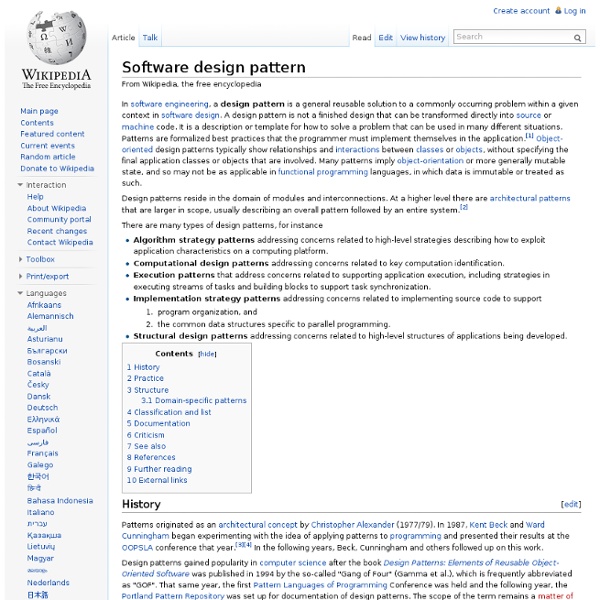Software design pattern

Design Patterns
In software engineering, a design pattern is a general repeatable solution to a commonly occurring problem in software design. A design pattern isn't a finished design that can be transformed directly into code. It is a description or template for how to solve a problem that can be used in many different situations. Uses of Design Patterns Design patterns can speed up the development process by providing tested, proven development paradigms. Often, people only understand how to apply certain software design techniques to certain problems. In addition, patterns allow developers to communicate using well-known, well understood names for software interactions. Creational design patterns These design patterns are all about class instantiation. Structural design patterns These design patterns are all about Class and Object composition. Behavioral design patterns These design patterns are all about Class's objects communication. Criticism Targets the wrong problem Lacks formal foundations
Related:
Related:



